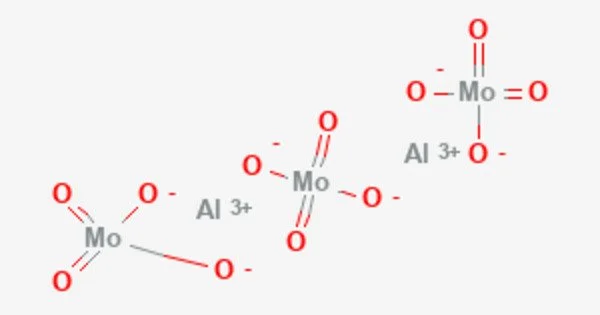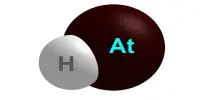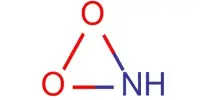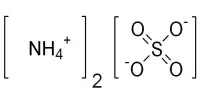Aluminium molybdate is an inorganic compound that contains aluminum, molybdenum, and oxygen. It is the chemical compound Al2(MoO4)3. The room temperature crystal structure was refined using time-of-flight powder neutron diffraction data. It is a white or light yellow crystalline powder that is insoluble in water. It is monoclinic and isostructural with Fe2(MoO4)3 and Cr2(MoO4)3.
Aluminium molybdate is commonly used as a catalyst in the chemical industry. It is also used as a corrosion inhibitor in coatings and as an additive in ceramic materials to improve their mechanical and thermal propertied.
Properties
It is a compound composed of aluminium, molybdenum, and oxygen. It is an inorganic compound and can exist in different forms such as a white powder, crystals or granules. It has a high surface area and specific surface properties, which make it effective in promoting chemical reactions.
- Chemical formula: Al2(MoO4)3
- Molar mass: 533.77 g mol−1
- Appearance: grey, metallic solid/powder odorless
- Melting point: 705 °C (1,301 °F; 978 K)
- Solubility in water: slightly soluble in water
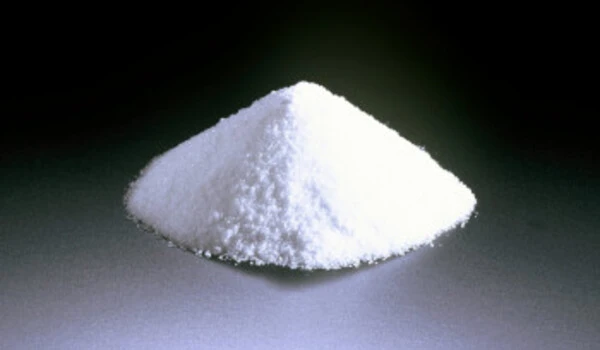
Aluminium molybdate is a stable compound that is insoluble in water. It is soluble in acids and alkalis, such as hydrochloric acid and sodium hydroxide. It is a refractory material, meaning that it can withstand high temperatures without melting or breaking down. It is often used in high-temperature applications such as furnace linings. It is a catalyst that is often used in the production of methanol and other chemicals. It can also be used to promote chemical reactions such as the oxidation of alcohols.
It is an insulator, meaning that it does not conduct electricity. This property makes it useful as an electrical insulator in high-temperature applications.
Application
Aluminum molybdate is used as a catalyst in various chemical reactions. It is also used in the production of ceramics and as a pigment in paints and coatings. Additionally, aluminum molybdate has potential applications in the field of energy storage and conversion, such as in lithium-ion batteries and electrochromic devices.
In addition, aluminium molybdate has been studied for its potential application as a material for radiation shielding due to its high atomic number and density. It has also been investigated for its use in lithium-ion batteries and as a component in photocatalysts for water purification.
Overall, aluminium molybdate is a versatile and useful compound with a wide range of potential applications in various fields of science and technology. It is generally considered to be safe and non-toxic. However, as with all chemicals, it should be handled with care and in accordance with proper safety procedures.
